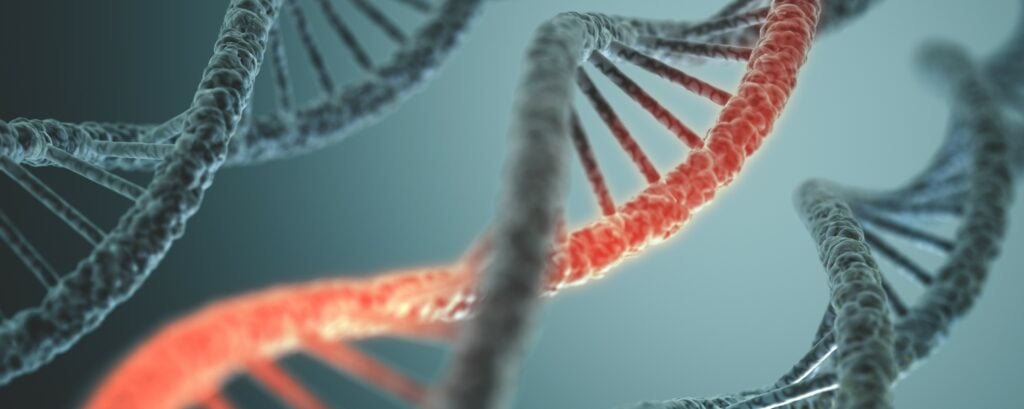Trauma: Types, stages, effects, and treatments
Reviewed by Brooks Baer, LCPC, CMHP

What is trauma?
Trauma is an emotional response to a horrifying, stressful, or dangerous event, relationship, or circumstance that threatens or harms a person’s health and safety. Most people will experience at least one form of trauma in their lifetime.


There are four types of trauma:
- Acute trauma develops in response to a single event (like a car accident, sexual assault, or natural disaster).
- Complex trauma develops in response to prolonged and repeated traumatic events (such as child abuse or neglect, domestic violence, or civil unrest).
- Secondary/vicarious trauma develops in response to witnessing someone else’s trauma (typical among therapists, first responders, health care providers, and so on).
- Generational trauma is passed down from one generation to the next, particularly when it’s experienced by a collective group (as in slavery or genocide).
Our trauma response usually occurs in three stages:
1. Emergency response
Right after a traumatic event, you may experience psychological shock, also called an “acute stress response.” In psychological shock, your body is overwhelmed with emotion, which can show up in a variety of physical symptoms. A rush of adrenaline may result in shakiness, a rapid heartbeat, difficulty breathing, nausea, and chest tightness. These symptoms represent your body’s fight-or-flight response—it’s getting ready for immediate action in order to survive.
More recently, researchers have expanded the idea of “fighting” (becoming aggressive or screaming) or “fleeing” (running away) to include two additional emergency responses: “freezing” (staying still, avoiding decisions, or feeling numb or disconnected) and “fawning”(trying to please others to avoid conflict).
2. Short-term processing
In the days and weeks following your trauma, you return to some sense of normalcy or routine. During this adjustment period, you may experience grief, stress, or flashbacks. You may also develop a trauma or stressor-related disorder that keeps you from recovering fully.
3. Long-term recovery
In this later stage, you learn to make meaning from your trauma and integrate what you’ve experienced into your life story. You’re able to accept what’s happened without reliving your trauma endlessly.
Trauma and perception
Trauma relies on our own perception of danger and safety. This means different people can go through the same stressful experience and have different trauma responses.
For example, let’s say three roommates are home when a minor earthquake hits. The first person may develop trauma symptoms that resolve in a few days or weeks. The second person’s symptoms may linger for months, eventually developing into posttraumatic stress disorder (PTSD). The third person may not be traumatized at all, having lived in an earthquake-prone area their entire life.
The third roommate had experience with and context for what was happening and remained calm. The second roommate, however, didn’t realize the earthquake was minor and thought they were going to die. Even though they weren’t technically in danger, their perception of danger still caused a serious trauma response.
Big-T trauma and little-t trauma
Because trauma depends on an individual’s emotional response, many different circumstances can count as trauma. Therapists often use the ideas of “big-T” trauma and “little-t” trauma to help us understand how seemingly small things can traumatize us.
Big-T trauma refers to the clearly dangerous and extreme events we already associate with the word “trauma.” Examples include:
- War
- Natural disasters
- Sexual violence
- Physical abuse
- Mass shootings
- Terrorist attacks
- Severe car accidents
Little-t trauma refers to events and circumstances that are life-altering but not life-threatening. These situations may seem ordinary, but they can still produce a trauma response and damage our mental health. Examples include:
- Divorce
- Bullying
- Getting fired
- Unresolved relational conflicts
- Financial or legal trouble
It’s important to expand our definition of trauma beyond just big-T trauma. Multiple little-t traumas can build up over time and cause the kinds of severe symptoms that usually come from big-T traumas.
Effects of trauma
Trauma harms or threatens to harm our physical, mental, or emotional well-being. Different kinds of traumatic events can jeopardize different areas of our health, and most forms of trauma affect us in more than one way.
Let’s say you get in a car accident and break your leg. While the physical trauma of your broken leg is visible, the emotional trauma of the experience may be less obvious. Unresolved emotions may affect you psychologically, showing up as fear and panic any time you get in a car.
Emotional or psychological trauma can also express itself physically. For example, if you’re struggling with the psychological trauma of a divorce or breakup, you might develop physical symptoms like insomnia, appetite changes, or muscle tension.
Common trauma disorders
Sometimes our trauma responses develop into mental health disorders known as “trauma and stressor-related disorders.” Common ones include:
- Posttraumatic stress disorder (PTSD) occurs when trauma symptoms last for more than a month after the trauma happened. PTSD symptoms include intrusive memories, avoidance, cognition and mood changes, and heightened reactivity.
- Acute stress disorder (ASD) occurs when trauma symptoms last for less than a month after the trauma happened.
- Adjustment disorders involve difficulty adjusting to a stressful event; these disorders persist for up to six months after the event has ended.
- Complex PTSD is a more severe form of PTSD that can follow long-term trauma or multiple traumas, such as an abusive relationship or a lengthy deployment to a war zone.
How childhood trauma affects development
Experiencing or witnessing trauma in childhood can have lasting effects on a person’s development. Certain mental health disorders and developmental disorders may develop in response to trauma, especially if a child can’t access treatment, resources, and support and can’t process the trauma in a healthy way.
Childhood trauma can affect development in these common ways:
- Developmental trauma disorder (DTD): Bessel van der Kolk, MD, has proposed this potential diagnosis for children with complex trauma histories.1 It’s not currently included in the “Diagnostic and Statistical Manual of Mental Disorders” (DSM-5), but experts are weighing its usefulness.
- Oppositional defiant disorder (ODD): ODD is a childhood behavior disorder involving anger, defiance, and spite. Children may develop ODD in response to trauma, abuse, or other family issues.
- Dissociation: Many children dissociate as a way to cope with trauma. Dissociation means detaching from yourself or from reality in order to protect yourself. Depersonalization/derealization disorder is one type of dissociative disorder commonly triggered by trauma.
- Cognitive struggles: If you experience or witness trauma as a child, you may struggle cognitively. For example, if you’re repressing memories of childhood trauma, you might struggle to remember not just those traumatic memories, but also unrelated details and information.
Associated mental health challenges
Trauma can interact with, trigger, or worsen mental health disorders such as:
Trauma treatment options
The following reliable, evidence-based therapies can help survivors of trauma make great improvements.
- Cognitive behavioral therapy (CBT): With a trauma-informed CBT therapist, you can learn to identify unhelpful thought patterns at the root of your emotions and behaviors.
- Prolonged exposure therapy: Exposure therapy allows you to confront traumatic memories and emotions in a safe, controlled environment.
- Eye movement desensitization and reprocessing (EMDR): EMDR helps you process traumatic memories in a way that encourages new connections and rapid processing.
- Somatic therapy: Somatic therapies, also known as body-based therapies, can help reconnect the mind and body after trauma. If you feel “out of body” after trauma, this treatment approach could be especially helpful. Common types include somatic experiencing, sensorimotor psychotherapy, and the hakomi method.
- Medication: Antidepressants may ease some trauma symptoms.
With treatment, you can learn to practice different forms of self-care, like meditation and mindfulness, that help you navigate trauma symptoms in healthy ways. You can also learn to regulate your emotions when trauma symptoms feel overwhelming.
For support from a mental health professional, browse our therapist directory.
Get help now
If you’re struggling with your mental health after experiencing trauma, help is available right away:
- Crisis Text Line: Text HOME to 741741
- National Suicide & Crisis Lifeline: 988
- National Domestic Violence Hotline: 1-800-799-SAFE (7233)

Sources
About the author
The editorial team at therapist.com works with the world’s leading clinical experts to bring you accessible, insightful information about mental health topics and trends.
Related articles

Betrayal trauma: What it is and how to heal
Betrayal trauma occurs when someone’s trust is violated by a person or...

What is race-based traumatic stress (RBTS)?
RBTS is a type of chronic stress stemming from racism and race-related...

The ripple effect of trauma from gun violence
Imagine each mass shooting as the epicenter of an earthquake. Even indirect...

Generational trauma, epigenetics, and mental health
Research suggests the trauma of past generations may be passed down and can...
